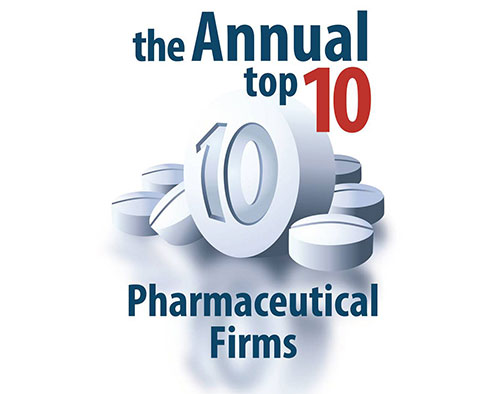How Much Value Have Traditional Drug Developers Lost Over the Past Year?
Mylan isn’t a traditional drug developer, but its 500+% price increase since 2007 for its EpiPen (epinephrine) Auto-Injector for life-threatening allergic reactions has focused more unflattering attention on “big pharma”—just a year after “pharma bro” Martin Shkreli’s infamous 5,000% price hike for Daraprim. On September 21, Mylan CEO Heather Bresch is expected to testify at a hearing of the House Oversight and Government Reform Committee—though if past hearings are any indication, Congress is more likely to generate heat than shed light on the industry.
And just as traditional drug developers have been lumped in with biotechs in the label “big pharma,” so too have the traditionals seen the same erosion in their total values of all outstanding shares—their “market capitalization”—as biotechs have experienced over the past year.
Overall, the top 10 pharmas on this year’s GEN List generated a combined $1.568 trillion in market cap, down 3.7% from the $1.626 trillion racked up by the drug developers on last year’s GEN List of the Top 10 Pharma Companies. Interestingly, the decline in pharma market cap is much smaller than the 14.5% slide seen in the market cap of biotechs in GEN’s recent list of the Top 25 Biotech Companies of 2016.
All 10 companies appearing on the 2015 list appear this year as well—but only because Bayer’s market cap inched up between September 9 and 14 following a strengthening Euro and the company’s pending $66 billion acquisition of Monsanto. Bayer’s rise knocked out Eli Lilly, which ranked #11 at $86.63 billion.
However, Bayer was among six companies to show declines in market value—computed as shares times current market price—compared with last year’s list. The other five were Bristol-Myers Squibb, Sanofi, GlaxoSmithKline, Roche, and Novartis. The four companies that year-over-year increases in their market caps were AbbVie, Merck & Co., Pfizer, and Johnson & Johnson.
Below is a list of this year’s top 10 pharmaceutical companies, ranked by market cap as of September 14 as furnished by the companies on their websites; by the exchanges on which they trade their shares; or by other publicly available sources such as any of several free stock information websites. Figures of non-U.S. companies were converted to U.S. dollars from various currencies on September 14.
#10. Bayer
$87.64 billion (€77.80 billion)
XETRA (BAY) 1
#9. Bristol-Myers Squibb
$92.67 billion
NYSE (BMY)
#8. Sanofi
$101.55 billion (€90.21 billion)
Euronext Paris (SNY) 2
#7. AbbVie
$103.15 billion
NYSE (ABBV)
#6. GlaxoSmithKline
$103.82 billion (£78.65 billion)
London Stock Exchange (GSK) 3
#5. Merck & Co.
$170.92 billion
NYSE (MRK)
#4. Roche
$171.88 billion (CHF 167.28 billion)
SIX Swiss Exchange (ROG) 4
#3. Pfizer
$206.47 billion
NYSE (PFE)
#2. Novartis
$208.48 billion (CHF 202.94 billion)
SIX Swiss Exchange (NOVN) 5
1. Johnson & Johnson
$321.77 billion
NYSE (JNJ)
References
1. Bayer shares are traded in Germany on all seven stock exchanges—the Frankfurt Stock Exchange as well as on the Berlin, Dusseldorf, Hamburg, Hannover, Stuttgart, and Munich exchanges—and in Spain on the Barcelona and Madrid exchanges. In the U.S., Bayer trades American Depositary Receipts (ADRs) through the over-the-counter market.
2. Also listed on the New York Stock Exchange in the form of ADSs (American Depositary Shares); One ordinary share represents two ADSs.
3. In the U.S., GSK trades American Depositary Receipts (ADRs) on the New York Stock Exchange
4. Market cap information listed with Roche non-voting equity securities. Roche bearer shares are also listed on SIX Swiss Exchange. Roche’s American Depositary Receipt (ADR) is listed on OTCQX International Premier under the ticker RHHBY.
5. In the U.S., Novartis trades American Depositary Receipts (ADRs) on the New York Stock Exchange



